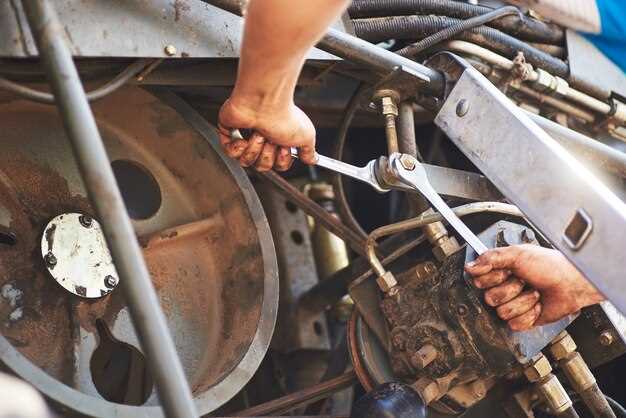
Upgrading to steel braided brake lines is a decision that can significantly enhance your vehicle’s braking performance and overall safety. Unlike traditional rubber brake lines, steel braided lines are designed to withstand higher pressures and provide a more reliable braking experience. This article will delve into the primary advantages of making this upgrade, highlighting how these high-performance components can contribute to improved automotive safety and handling.
One of the most notable benefits of steel braided brake lines is their superior durability. Constructed with a stainless steel outer layer, these lines are less susceptible to wear, tear, and expansion compared to their rubber counterparts. This resistance to degradation not only extends the life of the brake lines but also ensures consistent brake performance, especially under extreme conditions. Furthermore, the enhanced pressure tolerance of steel braided lines can prevent brake fade during rigorous driving, which is especially beneficial for performance-oriented vehicles.
In addition to increased durability, steel braided brake lines also provide a more responsive brake feel. When you engage the brakes, traditional rubber lines can expand slightly, resulting in a spongy brake pedal and a less precise response. Steel braided lines eliminate this flex, delivering a firmer and more direct connection between the brake pedal and the braking system. This improved feedback can instill greater confidence in the driver, allowing for more controlled and efficient stopping power, whether on the street or the track.
Improved Brake Responsiveness for Better Control

Upgrading to steel braided brake lines significantly enhances brake responsiveness, providing drivers with a more tactile and immediate braking experience. Unlike traditional rubber brake hoses, steel braided lines feature a composite structure that resists expansion under pressure. This reduction in hose flex leads to more consistent pedal feel and quicker reaction times.
When the brake pedal is engaged, the hydraulic pressure generated travels through the steel braided lines with minimal delay. This results in a more connected and direct action when applying the brakes, allowing for precise control over braking force. Drivers can more accurately modulate their braking, which is especially beneficial in high-performance or emergency situations where quick decision-making is crucial.
Additionally, the enhanced responsiveness contributes to improved vehicle stability during braking. Whether navigating tight corners or sudden stops, steel braided lines enable drivers to maintain better control and reduce the risk of brake fade. This improved performance not only increases safety but also boosts driver confidence, ultimately enhancing the overall driving experience.
Enhanced Durability Against Wear and Tear

One of the primary advantages of upgrading to steel braided brake lines is their remarkable durability when compared to standard rubber brake lines. The construction of steel braided lines significantly enhances their resistance to wear and tear, providing several key benefits:
- Superior Material Strength: Steel braided lines consist of multiple layers of stainless steel braided over a flexible rubber core. This construction offers exceptional tensile strength, preventing deformation and failure under high pressure.
- Resistance to Abrasion: The steel braid provides an armor-like layer that protects against abrasions and cuts. This is particularly beneficial in environments where brake lines may come into contact with sharp objects or rugged surfaces.
- Temperature Resistance: Steel braided lines can withstand extreme temperatures generated during braking. Unlike rubber lines, they are less likely to degrade or swell, ensuring consistent performance throughout various operating conditions.
- Long Lifespan: The durability of steel braided brake lines means they generally have a longer lifespan compared to traditional rubber lines. This longevity translates to fewer replacements, saving time and maintenance costs over the vehicle’s lifetime.
Investing in steel braided brake lines not only enhances the performance of your braking system but also provides peace of mind knowing that they are more resistant to the everyday wear and tear that can compromise safety.
Reduced Brake Line Expansion for Consistent Performance
One of the most significant advantages of upgrading to steel braided brake lines is the reduction in brake line expansion. Unlike conventional rubber brake lines, which can expand under hydraulic pressure, steel braided lines maintain their shape and structural integrity. This characteristic leads to more reliable braking performance, especially under high-stress conditions such as racing or heavy towing.
When brake fluid is applied, standard rubber lines can flex and bulge, leading to a delay in brake response and a spongy pedal feel. In contrast, steel braided lines minimize this expansion, allowing for a direct and immediate transfer of force from the brake pedal to the braking components. As a result, drivers experience a more precise and predictable braking response, which enhances overall vehicle control.
Furthermore, the reduction in line expansion helps maintain consistent brake fluid pressure throughout the system. This consistency is crucial for ensuring reliable braking performance over time, especially during repeated stops or when descending steep gradients. By minimizing the risk of brake fade, steel braided lines provide a safer and more efficient braking solution.
In addition to performance improvements, the enhanced durability of steel braided lines contributes to their longevity. With a reduced likelihood of wear and tear from flexing, these lines are less prone to issues such as cracking and leaking, which can compromise braking efficacy. Overall, opting for steel braided brake lines translates to a substantial enhancement in overall braking performance and reliability.

